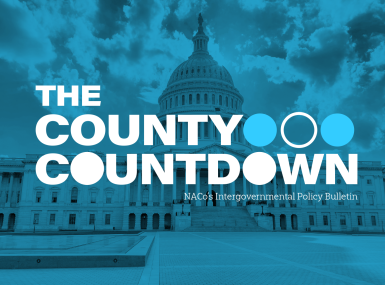Supplemental Nutrition Assistance Program (SNAP) Reauthorization and Appropriations

Author

Julia Cortina
Upcoming Events
Related News
ACTION NEEDED
Urge your members of Congress and the administration to support counties’ role in the federal, state and local partnership in administering and financing the Supplemental Nutrition Assistance Program (SNAP).
BACKGROUND
SNAP is the largest federal nutrition program, providing approximately 42 million low-income individuals with monthly grocery benefits as well as employment and training opportunities.
SNAP was reauthorized along with other food and agriculture programs in the 2018 Farm Bill, and has received short-term extensions since then, most recently in December 2024 through a Continuing Resolution (CR; P.L. 118-158). Replacement benefits for victims of SNAP EBT card skimming were not included in this CR. Though SNAP is an entitlement program, it still receives funding annually through the congressional appropriations process, meaning benefit availability can be impacted by government shutdowns.
Counties are responsible for administering the program in ten states representing 34.3 percent of total participants (14.6 million people): California, Colorado, Minnesota, New Jersey, New York, North Carolina, North Dakota, Ohio, Virginia and Wisconsin. These 10 county-administered states represented $23.5 billion in total monthly SNAP benefits issued in 2020, 31.8 percent of the national total. In these states, counties often contribute substantial local funds for administrative and supplemental costs toward the program.
In Minnesota, North Carolina and New Jersey counties must meet the entire 50 percent non-federal match requirement for SNAP administrative funds, while in California, Colorado, New York, Ohio, Virginia and Wisconsin the counties share this financial obligation with the state. Only in North Dakota does the state entirely fund this requirement. In FY 2024, county-administered states spent a combined $3.5 billion on the non-federal administrative share of the SNAP program.
SNAP not only helps struggling families put food on the table but effectively and efficiently stimulates the economy during times of downturn and natural disasters, as families in need can quickly access and spend benefits. In addition to providing food assistance for millions of low-income families, elderly Americans and individuals with disabilities, SNAP supports self- sufficiency through Employment and Training (E&T) programs that help participants gain skills, training or work experience and equip them for regular, sustained employment.
To be eligible for SNAP, participants must have income at or below 130 percent of the federal poverty level and may not possess assets exceeding $2,250 ($4,500 for households with an elderly or disabled member), with certain exceptions. However, an option called Broad Based Categorical Eligibility (BBCE) allows states to forego verification of these asset requirements and/or expand income eligibility up to 200 percent of the federal poverty line if SNAP applicants qualify for non-cash Temporary Assistance for Needy Families (TANF) or state maintenance of effort-funded benefits. SNAP participants must also fulfill work requirements, such as registering for work, accepting a suitable job if offered one, not voluntarily quitting a job without good cause and not reducing work participation below 30 hours a week. There are exemptions for certain groups such as students, those caring for children under age 6, individuals over age 59 and participants in alcohol or drug treatment programs. Able bodied adults without dependents (ABAWDs)—individuals aged 18-49 deemed work-eligible and not living with children—are subject to additional requirements. ABAWDs are limited to participating in SNAP for three out of 36 months unless they are working or participating in unpaid work through a state approved program or an E&T program for at least 20 hours per week.
The Fiscal Responsibility Act of 2023 (FRA) (P.L. 118-5) expanded the ABAWD time limit to include individuals up to age 54, phasing the age-limit increase in by FY 2025 and keeping it in place until FY 2030. The FRA exempts homeless individuals, veterans and youth aging out of foster care from the ABAWD time limit during this same period. The FRA also permanently reduces allowable state ABAWD exemptions from 12 to 8 percent and ends state flexibility to carry over ABAWD exemptions from year to year, while also mandating the USDA to publish all state ABAWD waiver requests and the agency’s response. In December 2024, the U.S. Department of Agriculture’s (USDA) Food and Nutrition Service (FNS) published a final rule codifying the FRA’s changes into SNAP’s program language.
KEY TALKING POINTS
- SNAP helps provide food assistance as well as employment and training programs for low-income individuals and families. Nearly 70 percent of the households participating in SNAP include children.
- States and counties should maintain flexibility in designing and implementing the program according to their needs and economic context, including the discretion to streamline administrative and application processes with other social service programs.
- Families participating in SNAP often face multiple barriers to self-sufficiency and can struggle to meet SNAP’s full work and participation requirements. States and counties should receive flexibility in waiving SNAP work requirements to meet the individual needs of their caseloads
- In county-administered states, counties often contribute substantial local funds to administrative and supplemental costs of the SNAP program.
- Increased funding and flexibility for the SNAP program is critically important for county human service agencies to meet local needs.


